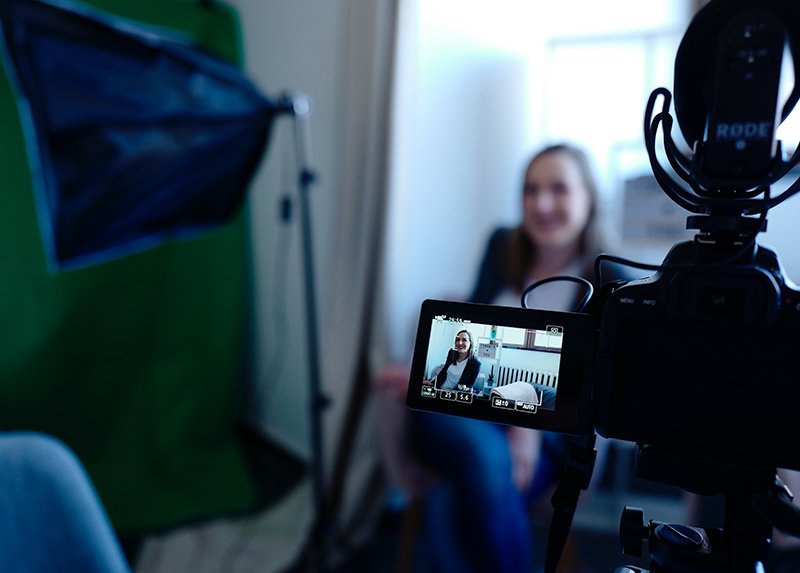Broadcast interview tips and media training (for in person and at home)
In today’s age of the 24-hour news cycle, social media and heightened expectations of those in the public eye, everything that we say or do can be scrutinised by the media and the public. Therefore, if you’ve found yourself in a position where you are being interviewed by the media, either at their request or yours, it is more important than ever to be prepared.
When a journalist is asking you questions in front of a camera or microphone, it can be hard to find the right thing to say – even more so when you’re trying to represent your organisation and include key messages. So, the best way to prepare yourself is with media training.
Here are some of our top tips straight from our COVID-19 packages, with some additional tips for a video interview from home because we’ve all seen the videoconferencing gaffs on social media!
If you know you need more than tips (or are keen to hone your existing skills), we’re offering two hour media training sessions as part of our COVID-19 package suite. We’ll get you media ready fast, teach you the ins and outs of interview techniques and ensure you stay in control of your messaging, even under the most trying of circumstances. Check it out here.
1. Confirm details
Find out as much as you can about the interview ahead of time.
Confirm if the program is live or taped and if it will or will not be edited.
Find out the interview length and the name of the interviewer. Do your research on their style. The shorter the interview, the more critical it is that you condense your main messages into sound bites of 10 to 20 seconds.
Ask the interviewer or producer beforehand what their expectations of you are; what type of angles on the topic at hand are they looking for?
Determine who else they might be interviewing for the story so you have the full picture.
2. Focus on your key message(s)
Write down your key messages in advance. Draft concise, to-the-point statements, or ‘sound bites’ that highlight these points.
During the interview, take the opportunity to re-state these messages.
Use analogies, related stories and personal experiences to help everyone understand your point of view.
3. Prepare
Practice delivering your sound bites and examples in a mock interview with a colleague or friend – or even in front of a mirror.
Practice delivering each of your answers in less than 20 seconds.
Prepare for worst-case questions.
4. Make yourself comfortable, especially if you’re joining the program from your home
If taking place at a studio, arrive at least 30 minutes early.
Adjust and test any equipment before the program begins. If you are speaking into a microphone, maintain a distance of at least six inches.
Be ready to remain in the same spot and position for the duration of the interview. Have a glass of water ready and avoid conditions that may make you fidget ie. room temperature or a swivel chair.
If you are joining a broadcast from home, avoid going viral by letting the others in your house know the timing of your interview and, where possible, have them leave the house with the kids and/or the dog to avoid interruptions. While unannounced appearances interruptions make for hilarious videos, it will likely derail the interview and throw you off your key messages.
Avoid becoming an internet sensation like Professor Robert Kelly who’s interview disruption has been seen by tens of millions of people.
5. Follow best interview practices
Be yourself. Be natural.
Speak in simple terms and avoid technical language or industry jargon.
Assume that you are always on the air while in front of the camera.
Keep the real, at-home audience in mind, direct your remarks to them.
Limit answers to about three sentences.
Avoid confrontation. Never become defensive or angry. (Our Media Training package includes a list of bridging statements to help with tricky questions).
Keep to your own agenda by answering each question with a direct factual statement followed by a relevant key message.
6. Looking good on TV (or online!)
Wear comfortable and appropriate clothing, no matter where the interview is taking place, and be sure to groom yourself to ensure you look professional. Bed hair does show on camera.
Bright, solid colours look best on camera.
Employ effective body language. While what we say impacts the way we come across to another, what we are doing as we say it, can have even more of an impact. Think about your energy, eye contact, gestures, posture and tone of voice.
If the interviewer or reporter is coming to your location, such as your workplace, create a visually enhancing environment. This goes for a home interview too. Check what’s visible from your desk and remove anything unsightly. You don’t want to broadcast your dusty bookshelf or the stack of unfolded laundry behind you?
When in person, look at the reporter, not the camera. When via your laptop, look at the camera, not yourself.

